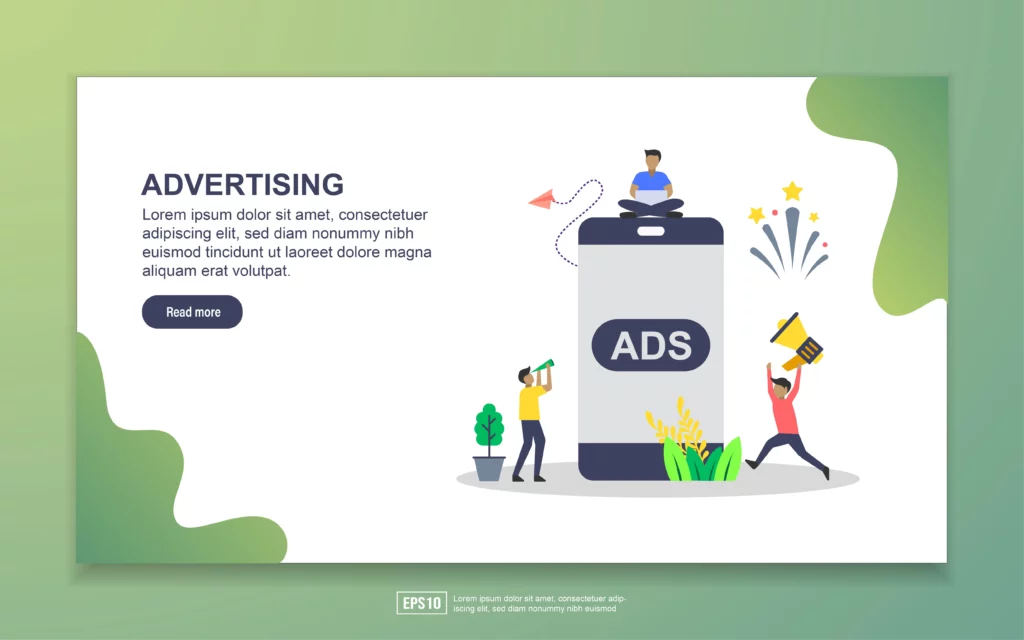Google Ads Ad Strength is revolutionizing the way businesses advertise online. This powerful tool from Google Ads, the world’s leading online advertising platform, enables advertisers to create high-impact campaigns that reach their target audiences quickly and effectively.
With Ad Strength, you can maximize your ad’s impact and drive results faster than ever before. In this blog post, experts from Vancouver SEO we’ll explore how Ad Strength works and how it can revolutionize your digital advertising campaigns.

What is Ad Strength and Why is it Important?
Ad Strength is a metric developed by Google Ads that assesses the effectiveness of your ad campaigns. It measures the overall quality and relevance of your ads by evaluating a variety of factors such as ad copy, keywords, and landing pages.
Ad Strength is important because it can significantly impact the performance of your ad campaigns. If your Ad Strength score is poor, it means that your ads may not be reaching their full potential and may not be getting the engagement they need to succeed.
Here Are Some Key Things To Keep In Mind About Ad Strength And Why It Matters:
- Ad Strength is a powerful tool for improving the overall quality and relevance of your ad campaigns.
- Google Ads assigns a score of 1 to 10 to your ad campaigns based on their Ad Strength.
- Ad Strength takes into account several important factors that impact the effectiveness of your ads, including ad relevance, landing page experience, and expected click-through rate.
- A low Ad Strength score may result in poor ad performance, low click-through rates, and lower conversions.
- By focusing on improving your Ad Strength score, you can increase the effectiveness of your ads and drive more traffic and conversions to your website.
In short, Ad Strength is a critical metric that you should pay close attention to if you want your ad campaigns to succeed. By understanding how to increase your Ad Strength in Google Ads and implementing best practices for ad creation and optimization, you can ensure that your ads are reaching their full potential and driving results for your business.

How Ad Strength Works
Google Ads Ad Strength is a powerful tool designed to help advertisers improve the effectiveness of their campaigns.
Here’s How It Works:
- Ad Strength analyzes your ad and provides feedback on its overall strength, taking into account factors such as relevance, quality, and diversity.
- Ad Strength assigns a score from “Poor” to “Excellent” based on the analysis.
- The tool also provides recommendations on how to improve your ad’s strength and increase its performance.
- Ad Strength considers a range of elements, including ad text, headline, images, and landing page to provide a comprehensive assessment of your ad’s overall strength.
- Advertisers can view their Ad Strength score and recommendations for improvement in the Google Ads interface, enabling them to make informed decisions and adjust their campaigns accordingly.
In summary, Ad Strength is a dynamic and data-driven tool that provides actionable insights to help advertisers improve the strength and effectiveness of their Google Ads campaigns. By analyzing key elements of your ad and providing specific recommendations, Ad Strength empowers advertisers to optimize their campaigns for maximum results.

The Key Elements of Ad Strength
To understand how to increase your Google Ads Ad Strength, it’s important to know the key elements that make up this metric.
Here Are The Main Factors That Affect Your Ad Strength:
Relevance:
This refers to how well your ad copy and landing page content matches the keywords and intent of your target audience. Ad relevance is essential to delivering a compelling message that resonates with potential customers.
Clarity and Concision:
A well-crafted ad should be easy to understand and communicate a clear value proposition to the user. Your ad copy should be concise and avoid overly complicated language.
Landing Page Experience:
Google considers the quality and relevance of your landing page to be an essential element of Ad Strength. Your landing page should be fast, mobile-friendly, and offer a positive user experience that matches the promise of your ad copy.
Diversity:
Google wants to see that your ads are diverse in terms of targeting and messaging. Using different ad formats, such as video ads, responsive search ads, and image ads, can help you demonstrate a more varied approach to reaching your audience.
These are the primary elements that Google considers when evaluating Ad Strength. If you have a Google Ad Strength poor rating, your ads are likely falling short in one or more of these areas.
However, by making the necessary improvements, you can increase your Ad Strength and enhance the performance of your ad campaigns.

How to Improve Your Ad Strength
Improving your Ad Strength can be crucial in ensuring the success of your Google Ads campaigns. A strong Ad Strength score can mean higher ad relevance, better ad performance, and ultimately, more conversions.
Here Are Some Tips On How To Improve Your Ad Strength In Google Ads:
1. Optimize Your Ad Copy
Your ad copy is a crucial element in your Ad Strength score. Make sure to use relevant keywords, a clear value proposition, and a compelling call to action. Use ad extensions like site links, callouts, and structured snippets to provide additional information about your business.
2. Use High-Quality Images And Videos
Visual elements can significantly impact the performance of your ads. Use high-quality images and videos that are relevant to your ad message and target audience.
3. Improve Your Landing Page Experience
A poor landing page experience can lead to a lower Ad Strength score. Make sure that your landing page is relevant to your ad copy, has a clear call-to-action, and is optimized for mobile devices.
4. Refine Your Targeting
Targeting the right audience can improve your Ad Strength score. Use audience targeting options like demographics, interests, and behaviors to reach the most relevant users for your business.
5. Test And Optimize Your Ads
Continuously testing and optimizing your ads can help improve your Ad Strength score. Test different ad copy, images, and targeting options to see what works best for your target audience. Improving your Ad Strength requires constant monitoring and optimization of your campaigns.
By using Google Ads Ad Strength, you can easily track your progress and identify areas that need improvement. Take advantage of the insights provided by Ad Strength and adjust your campaigns accordingly to achieve better results.
Keep in mind that a high Ad Strength score does not guarantee success, but it can help you make more informed decisions about your campaigns. Use Google Ads Ad Strength to your advantage and take your digital advertising to the next level.

The Benefits of Using Ad Strength for Your Ad Campaigns
Using Google Ads Ad Strength Can Benefit Your Ad Campaigns In Several Ways:
• Better Quality Scores:
Ad Strength evaluates the quality of your ads and helps you identify areas where improvements are needed. By making changes to your ad based on Ad Strength recommendations, you can improve your Quality Scores. Higher Quality Scores lead to lower ad costs and better ad positioning.
• Increased Ad Relevance:
Ad Strength analyzes your ad and compares it to the keywords and landing page you are targeting. This helps you ensure that your ad is relevant to the user’s search query, resulting in higher click-through rates.
• Higher Conversion Rates:
Ad Strength focuses on the user’s experience and helps you create ads that are more engaging and compelling. By improving your ad’s messaging, calls-to-action, and visual elements, you can increase your conversion rates.
• Increased ROI:
Ad Strength can help you create ads that are more relevant, engaging, and compelling, resulting in higher click-through rates, higher conversion rates, and lower costs per acquisition. This can ultimately lead to a higher ROI for your ad campaigns.
• Time Savings:
Ad Strength provides recommendations and suggestions to improve your ad’s performance, saving you time and effort. You can quickly identify areas that need improvement and make changes to your ads based on Ad Strength suggestions.
• Competitive Advantage:
By using Ad Strength, you can create ads that stand out from the competition, increasing your chances of getting noticed and attracting more customers.
Overall, using Google Ads Ad Strength can help you create better-performing ads, save time and effort, and achieve higher ROI for your ad campaigns. It’s a powerful tool that can help you stay ahead of the competition and achieve your advertising goals.

If You’re Wondering How To Improve Ad Strength In Google Ads, Here Are Some Tips To Get Started:
• Focus On The Key Elements:
Ad Strength looks at four key areas: ad relevance, landing page experience, ad format, and expected click-through rate. By focusing on these elements, you can make sure your ad is as effective as possible.
• Use Targeted Keywords:
Make sure your ad copy includes relevant keywords that match the user’s search query. This can help improve your ad relevance and expected click-through rate.
• Improve Your Landing Page:
Your landing page should be relevant to your ad and provide a good user experience. Make sure it loads quickly and has a clear call to action.
• Test Different Ad Formats:
Experiment with different ad formats, such as responsive search ads, to see which performs best for your campaign.
• Monitor Your Performance:
Keep track of your ad performance and make changes as needed based on Ad Strength recommendations. This can help you continue to improve your ad strength over time.
By following these tips, you can improve your Ad Strength and create ads that are more effective at reaching and engaging your target audience.
With Google Ads Ad Strength, you have a powerful tool to help you stay ahead of the competition and achieve your advertising goals.
Tips and Best Practices for Maximizing the Effectiveness of Ad Strength
Here Are Some Tips And Best Practices For Improving Your Google Ads Ad Strength And Making The Most Out Of This Powerful Tool:
1. Identify The Key Elements:
To improve your Google Ad Strength, it is essential to identify the key elements that influence the score. Make sure you understand what Google considers as essential components of a high-quality ad.
2. Create Compelling Headlines And Descriptions:
Your headlines and descriptions are crucial components of your ads. Make sure they are concise, eye-catching, and accurately reflect your offer.

3. Use Relevant Keywords:
Keyword research is a critical part of creating successful ads. Ensure that your keywords are relevant to your ad’s content and that they appear in your headlines and descriptions.
4. Improve Your Landing Page Experience:
Google values the user experience, so make sure that your landing page is user-friendly and relevant to your ad’s content. A poor landing page experience can significantly reduce your ad’s effectiveness.
5. Optimize For Mobile:
In today’s digital age, most users browse the internet on their mobile devices. Make sure that your ads are optimized for mobile and that your landing page is mobile-friendly.
6. Test Different Variations Of Your Ad:
A/B testing is an effective way to improve your Google Ad Strength. Test different headlines, descriptions, and even landing pages to see which version performs the best.
7. Monitor your google ads Ad Strength score regularly:
Regularly monitor your Google Ad Strength score to identify areas for improvement. A poor score can significantly reduce your ad’s effectiveness, so take action to address any issues promptly.
Be sure to contact us any time if you have more questions in your mind about google ads ad strength.




